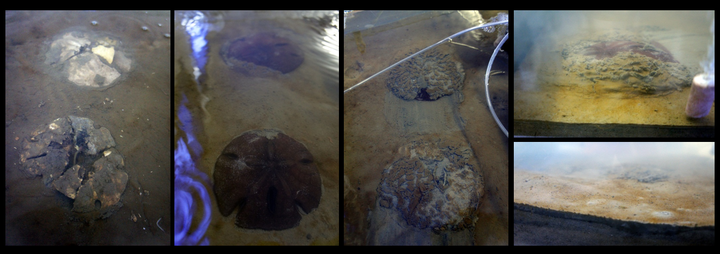Bioturbation by the sand dollar Encope emarginata (Echinoidea, Mellitidae) changes the composition and size structure of microphytobenthic assemblages
 Image credit: Marco C Brustolin
Image credit: Marco C BrustolinAbstract
To assess the effects of feeding and bioturbation by the sand dollar Encope emarginata on microphytobenthic structure, we have carried out a 10-day factorial mesocosm experiment. Four treatments were applied to discriminate between biological (feeding) and physical (bioturbation) effects: (i) with live E. emarginata, in which grazing and bulldozing activities occurred; (ii) without sand dollars but subjected to artificial disturbance simulating mechanical bioturbation effects; (iii) with dead calcareous skeletons, in which neither feeding nor bioturbation occurred; and (iv) without live or dead individuals. Bioturbation negatively affected microphytobenthic assemblages, as indicated by the lower overall microalgal cell densities in “live E. emarginata” and “artificial disturbance.” Densities of Nitzschia spp. (pennate, <20 µm) were higher in “without E. emarginata,” whereas densities of Auliscus sp. (centric, >20 µm) were higher in “live E. emarginata,” indicating that sand dollar disrupted the <20 µm biofilm, favoring larger diatoms. Higher densities of Nitzschia spp. in “artificial disturbance” compared with “live E. emarginata” indicated that sand dollar selectivity for smaller food items acts synergistically with bulldozing in structuring microphytobenthos. Thus, both trophic and engineering processes mediated by E. emarginata influence microphytobenthic structure. Our results highlight the importance of complex interactions among different-sized species in structuring benthic assemblages.
Supplementary notes can be added here, including code, math, and images.